#my computer is physically inaccessible (too many things on my desk)
Explore tagged Tumblr posts
Text
When I'm back from camp (tomorrow) it's the writing + art fight grind guys I'm so excited 💪
#Spiffs pov of the finale SOON#..... Anniversary piece that's several months overdue soon?#my computer is physically inaccessible (too many things on my desk)#PLOTTING THE SPLAU SOON!!!!!!!
2 notes
·
View notes
Text
Hi! I'm chronically ill and disabled (both physically and neurodivergent), though my conditions are fairly mild.
What tools and resources do you use to write?
I can't use fancy writing software with lots of customizations and special features. My ADHD will have me spending all my time configuring things and filling in whatever unnecessary information the program asks for. I'll also probably get overwhelmed and stop using the software after a week or two, never to touch it again.
I need things simple. A simple interface. Barely any feature flexibility and something that is a calm sensory experience.
Alas, Microsoft Word on dark mode, with the AI editor and all the grammar checking features (save basic spellcheck) turned off. The somewhat "old fashioned way". In fact, my favourite version of word to write on is 2003 (though it doesn't have dark mode).
Also, a membrane keyboard (small, light keys), a chair with a backrest, chairs with lots of cushion and space to "sit weirdly" and wiggle around, and I am looking into ring splints to stop my pinky knuckles from sitting wrong in their joints as I type. The computer itself is a tool. I can't write large amounts by hand without pain, if I have to I prefer to write with a very runny ink that doesn't clot (the pen can't glide too smoothly though, I need feedback for motor control) or mechanical pencil with a soft grip, and I write in cursive (less jerky wrist motions).
How do you accommodate for yourself when working through the writing process?
All my notes, manuscripts, brainstorming etc. has to be well-organized and easy to find. Otherwise I will get overwhelmed and not touch it. I am also at risk of losing it (ADHD again). I organize my word docs easily enough - I have folders within folders within folders (set up during a hyperfocus episode many a year ago) and I just take the extra 2 seconds to save my document to the correct place when I create it.
I also set aside large chunks of time, mainly late at night, where I can write uninterrupted. No one needs to talk to me. There is nowhere I need to remember to be soon. No one else is awake making noise. I have the most energy at night and my anxiety is worst in the mornings. When there is nothing for me to do but lose myself in my writing I set up the perfect conditions for hyperfocus to kick in. Then I am actually able to put my entire brain into my work.
What issues and challenges do you still encounter while drafting?
I go long periods of time without writing due to chronic fatigue. I also need a better set up because my posture is killing my neck and my knees. I like to sit with my feet up because circulation issues but if I don't have a proper foot stool I end up w-sitting or sitting on my knees in a chair. And then I wonder why my knee isn't sitting right in it's socket... Sometimes I write in bed with a pillow under my knees and that seems to help.
Honestly, my biggest challenge is money. I can't afford to go splurge on the new chair, wrist supports, ergonomic mouse, and file organizers for my desk that I need in order to make that space at all useable. I have to buy one little thing every few months and then wait until I have the money again. I haven't actually used my desk in years. It is so messy (desperately needs storage solutions and file organizers) and it is inaccessible for me to sit at for long periods of time without pain.
What advice do you have for other disabled/chronically ill writers?
Cursive and touch typing are wonders for hypermobile people. Before you dismiss cursive for "hurting your hand" make sure that you were actually taught it correctly. It should be written from the shoulder, with the whole arm, and should be much gentler and more natural for the wrist. It should also be loose, if you are tensing when writing cursive something isn't right.
As for touch typing, I still struggle to type with my pinkies (particularly the top row of keys) but overall working on my accuracy and correcting some bad habits have saved my hands many a cramp.
My only other advice is to remember to bring a notepad into the bathroom with you when you are writhing on the floor in the dark with a migraine. For research purposes.
Oh and, you aren't alone. It's okay if you aren't making as much progress as you had hoped to. It's not your fault. Even if you never get the chance to write again, you don't need to finish a project for it to be worth something. Your writing is beautiful, all of it, even the messy character doodles and unhinged notes app bullet points, because you, a whole human person, wanted it to exist. You deserve to enjoy things. Even when they aren't "productive."
Chronically ill and disabled writers: I want to hear from you!
What tools and resources do you use to write?
How do you accommodate for yourself when working through the writing process?
What issues and challenges do you still encounter while drafting?
What advice do you have for other disabled/chronically ill writers?

I’m sharing a series of blog posts aimed at supporting these communities within the general writing community— a community to which I belong. Much of the popular bits of writing advice just do not work for us, our minds, or bodies— so I want to create some that does. I am preparing resources with information that supports people like myself, who struggle with health conditions and the challenges related to them.
I can’t guarantee these posts will automatically solve your writing dilemmas. What I can say is this: building community and the sharing of resources has changed my life as a disabled and chronically ill writer for the better. That sort of support is something I wish for all of you who happen to read this.
invite you to comment here, contact me via private message, or through my ask box. If you’re more comfortable interacting through anonymous asks, I completely understand, and I welcome those, too.
The first post in this series— Writer’s Guide to Conquering Executive Dysfunction— is already available to read.
97 notes
·
View notes
Text
The 10 Best Wellness Trends Of The 2010’s
https://sciencespies.com/news/the-10-best-wellness-trends-of-the-2010s/
The 10 Best Wellness Trends Of The 2010’s
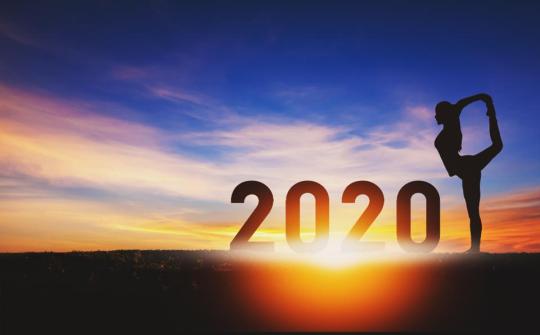

With the sun having set on the 2010s, what are the top wellness trends to take into the New Year … [+] 2020? (Photo: Getty Images)
Getty
Every chocolate eclair has a golden lining. While the 2010’s have had its share of bogus and bad wellness trends, it’s also had its good ones. On the last day of the past decade, I covered for Forbes the Top 10 worst wellness trends of the twenty-teens. Let’s use the New Year to cover the really good ones. Now without further doggie-doo, here are the Top 10 best:
10. Athleisure, activewear, and eco-friendly apparel
“Athleisure” or “activewear” clothes are more comfortable but also stylish garbs that you can wear during athletic activities as well as others such work, going to school, attending parties, and getting arrested at protests. It’s basically melding sportswear with everyday wear, making it easier to meld physical activity with everything else. Why not? After all, many classic office-wear clothing items make about as much sense as the lyrics of the song Ice, Ice Baby. For example, neckties have little practical purpose, except to dab the tears in your eyes from your dreams being slowly crushed by your boss.
Then there are eco-friendly clothes, those that are less likely to pollute the environment. For example, they may be made out of natural fibers rather than petroleum-based clothing, which can be a source of microplastics, making oceans look like a bedazzler gone overboard, so to speak, as I’ve covered before for Forbes.
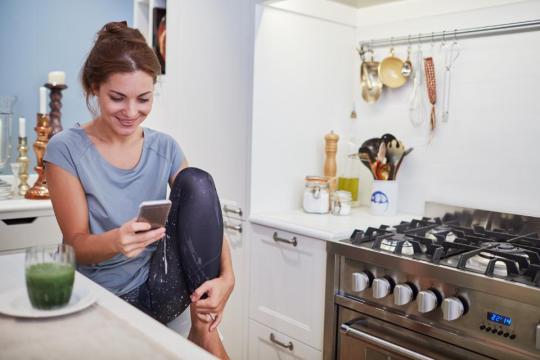
More clothing lines emerged that merged athletic activities with other activities. (Photo: Getty … [+] Images)
Getty
9. More flexible work hours and more attention to family leave policies
While I was in medical school, an anesthesiologist once told me, “the best thing about anesthesiology is that you get into work at 6 am and then.” Everything sort of went hazy after he said that, because, to borrow a quote from the movie Jerry McGuire, he definitely didn’t have me at 6 am. Even if he had continued by saying,”they provided gold bars and sushi,” that workday start-time basically ruled out anesthesiology as a career option for me.
Fortunately, the 2010s saw increasing recognition that not everyone operates best at the same hours. On one end of the spectrum are night owls, who prefer later-to-rise-and-later-to-bed hours. At the other end are people whose sole purpose is to make night owls miserable: the early morning people, the larks. Then, there is a whole continuum of people in between. Over the past decade, more and more workplaces began offering more flex hours, allowing employees to better tailor their “on times” to their own personal working styles.
Another trend was paying more attention to having more reasonable family leave policies. Note that the words are “paying more attention to” and not actually changing them. While some organizations have responded by offering longer family leave, not all are allowing mothers and fathers much time with, you know, those living, breathing, peeing, and pooping things that have appeared in their houses and apartments. As John Oliver pointed out in this 2015 episode of Last Week Tonight, the U.S. still lags most of the world (except for perhaps Papa New Guinea) in this area:
8. Doing something about the sitting problem
Is sitting literally the new smoking, as some began claiming that it is? Not exactly, unless you are doing something really weird with your bottom. What this saying is supposed to highlight are the dangers of sitting around too much, which can lead to an increased risk of obesity and other non-communicable diseases (NCDs). The 2010s saw various trends aimed at decreasing your sitting time, such as standing desks, conducting meetings while standing, desk cycles, computer screen reminders to periodically get off of your butt, and the movie “Abraham Lincoln: Vampire Hunter” to get you moving more or out of your seat. Not all of these will necessarily sit well with time though. Standing too long has its perils too, such as back and foot issues, and people asking you to stop blocking their view in the movie theater. And if you’ve got a standing desk, you’ve got to be real careful when propping your feet on the desk.
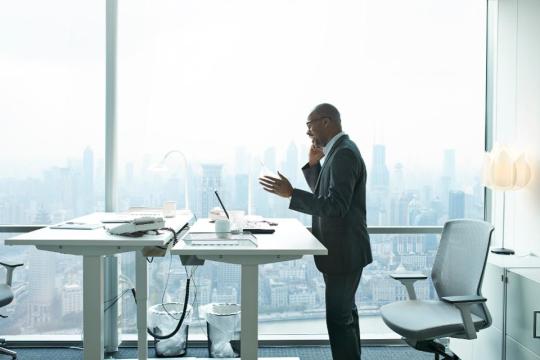
Standing desks became a thing in many workplaces. (Photo: Getty Images)
Getty
7. More plant-based diets
Eating more plants and less meat can be better for not only your health but also the environment. Fruits and vegetables are naturally lower in saturated fat and sodium and can be higher in sodium and many types of nutrients and antioxidants. Plus, meat production can add lots of carbon and other types of pollution to the environment, and it’s not just from cows farting. The past decade did see an increase in plant-awareness and plant-based options. Heck, there is even meat-free haggis now, which is a bit like Game of Thrones without the killing and the sex. Keep in mind, though, plant-based doesn’t automatically mean healthy. Some plant-based dishes can have plenty of bad stuff added such as saturated fat, salt, sugar, and artificial ingredients. Also, if you are vegan, don’t go acting like the Todd Ingram vegan character in the movie Scott Pilgrim vs. the World. Being vegan won’t automatically make you better than others, as this tweet references:
6. Waking up to sleep problems
What you do in bed matters, a lot. No, not that the stuff that takes on average 5.4 minutes to do with a range of 0.55 minutes to 44.1 minutes, based on a study of men in the Netherlands, United Kingdom, Spain, Turkey, and the United States published in the Journal of Sexual Medicine. Instead, I’m referring to what you usually do in bed, which is sleep or, at least try to sleep. Getting less than seven hours of sleep a night is linked to increased risk of obesity, high blood pressure, diabetes, coronary heart disease, stroke, frequent mental distress, and death. And if you are dead, you can’t do that other stuff in bed, at least you really shouldn’t. A study published in the February 19, 2016, issue of the Centers for Disease Control and Prevention’s (CDC) Morbidity and Mortality Weekly Report found that more than a third of Americans regularly fall below this seven hour threshold. While many of these sleep problems have not yet been adequately solved, at least there seems to be more awareness for now.
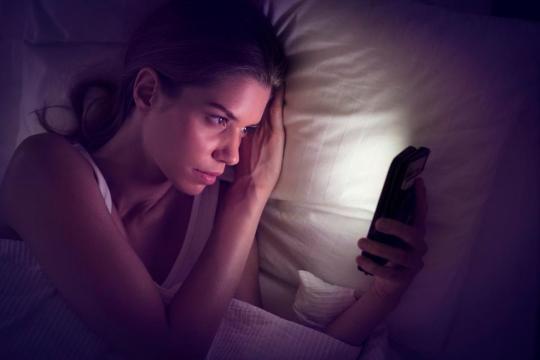
The increasing use of smartphones and other devices may be affecting sleep. (Photo: Getty Images)
Getty
5. Meditation and mindfulness
And Zen there’s this trend. It isn’t a completely new trend. In fact, various meditation and mindfulness practices have been common for hundreds of years in many parts of Asia. What’s new is these practices are becoming more mainstream in the U.S. For example, my previous article in Forbes covered how the NBA has incorporated such practices into its Rookie Transition Program. Being more in touch with your mind, your feelings, and your environment can’t be a bad thing. Maybe mindfulness can help counteract another trend that’s happening on social media: mindlessness.
Here is a video from the National Center for Complementary and Integrative Health (NCCIH) on the origins and traditions of meditation:
4. Personalized health, nutrition, etc.
Surprise, surprise. Everyone is not the same. You all don’t have the same bodies, the same minds, and the same circumstances. You all don’t like to dab. For too many years, too many people, whether its medical researchers, people trying to sell stuff like diets and medications, or people making policies and guidelines, have overlooked the individual and tried to lump people together into gigantic buckets. The 2010s saw increased realization that this just doesn’t work, that you actually have to, gasp, get to know someone before making many judgments and giving advice.
3. Talking more about mental health
If you have a bleeding arm, would you ever try to hide it or fear that someone will say, “ha, ha, that’s the bleeding arm guy, look at how bleeding his arm is.” Similarly, hiding mental health issues for fear of stigma and social and career implications makes little sense. You can’t address an issue if you don’t know about it. The 2010s had a number of athletes, movie and television stars, and other celebrities be more frank about their mental health challenges. For example, in this Today show segment, celebrities Carson Daly, Kristen Bell, Ryan Reynolds, Kevin Love and Michael Phelps discuss their anxiety, depression and other mental health challenges:
2. Efforts to increase sports participation and make it more inclusive.
Physical inactivity has become a major worldwide problem that’s gotten worse in the 2010s. Sport participation, especially among kids, dropped in the 2000s and much of the 2010’s with sports becoming too expensive, too competitive, and too inaccessible to play for many and a range of more sedentary activities like social media and putting Tide Pods in your mouth competing for attention.
But there is hope. The past decade witnessed increasing diversity among professional and other high profile athletes. Events like the 2019 Women’s World Cup provided a greater showcase for women’s sports:

Kosovare Asllani of Sweden (R) battles for the ball with Samantha Mewis of United States (L) during … [+] the 2019 FIFA Women’s World Cup France group F match between Sweden and USA at on June 20, 2019 in Le Havre, France. (Photo by Marcio Machado/Getty Images)
Getty Images
The tail end of Ichiro Suzuki’s major league baseball career, the spectacular beginning of Jeremy Lin’s NBA career, and Chloe Kim’s gold-medal-winning 2018 Winter Olympic debut got more people used to seeing those of Asian descent as top athletes.
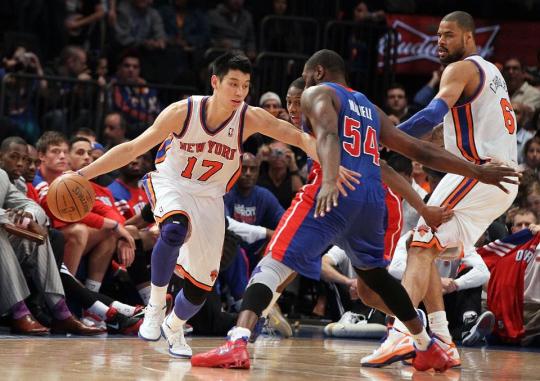
Jeremy Lin #17 of the New York Knicks in action against Jason Maxiell #54 of the Detroit Pistons on … [+] March 24, 2012 at Madison Square Garden in New York City. The Knicks defeated the Pistons 101-79. (Photo by Jim McIsaac/Getty Images)
Getty Images
The 2010s also saw more Black athletes dominate in roles, such as being an NFL quarterback, that not too long ago seemed reserved for White athletes. Moreover, initiatives like Project Play 2020, which I have described previously for Forbes, launched to increase youth participation in sports.
1.Finding ways to decrease sugar and salt consumption.
Oh sugar, who would have thought that drinking sugar water would be a bad thing? In the 2010s, there was finally a whole lot more attention paid to the dangers of adding sugar to everything. This included trying to find ways to curb the consumption of sugary drinks, such as warning labels and soda taxes, and helping people better understand how much sugar is being added to food. One example is when First Lady-at-the-time Michelle Obama worked with the U.S. Food and Drug Administration (FDA) to add a new category to the Nutrition Facts label: “Added Sugars.” The actual implementation of this change has been delayed under President Donald Trump’s administration.
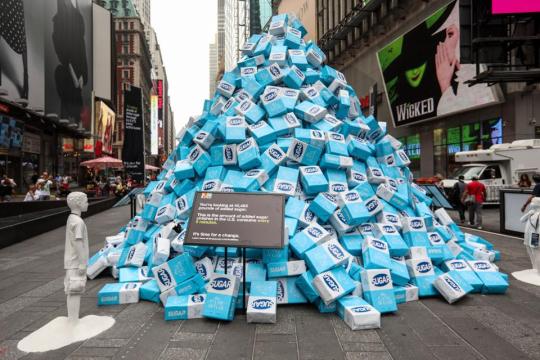
On August 22, 2017, KIND Healthy Snacks dumped over 45,000 pounds of sugar in Times Square to … [+] represent how much added sugar American children consume each day. (Photo by Vanessa Carvalho/Brazil Photo Press/LatinContent via Getty Images)
LatinContent via Getty Images
This list certainly ain’t everything that was good about wellness the 2010s. Also, some wellness trends in the decade were a bit mixed. For example, wearables really became a thing. The good thing about these tech devices is that you can wear them on your body to monitor what you do. The bad thing is that you can wear them on your body to monitor what you do. Questions remain about the usefulness of the information being collected and the impact of others knowing this information.
Alas, 2020 is no longer just name of a television show or a perfect reading on an eye exam. It is now when we are. How many of these best wellness trends will continue and expand? You may want to sleep on it.
#News
0 notes